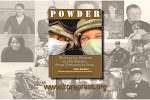Women’s history month has led to the predictable school project in my home: interview a woman you admire. I’ve reflected cynically about the value of such work in the past, but this year I’m taking a different view by thinking about women’s history on a smaller scale, within the course of a generation.
My mother, Louise Kimmich, is a retired teacher. She stayed home with me, my brother, and sister until my sister entered kindergarten, and then she returned to work. I remember her telling me many times about her limited professional options—teacher, nurse, and secretary—as a way of encouraging me to have big dreams about my own career choices.
But my mother modeled those ambitions, too. She returned to graduate school while working full time and taking care of her family, earning Master’s degrees in early childhood and special education. She took a page from the feminist activists’ playbook and went on strike at home, effectively engaging me and my siblings in taking care of some household tasks.
So here’s my own women’s history month project, an interview with a woman I admire. My mom, Louise Kimmich, helped pave the way for me and all the daughters of feminism. Her reflections illustrate how much feminism has achieved in a generation; they also point to some shortcomings that I’ll address in future columns.
Meanwhile, GWP readers, how do you take stock of feminists’ achievements and its unfinished business?
AK: Tell me about some of obstacles you faced as a woman.
LK: It was really the dark ages of womanhood if you were growing up in the 1950s! You had a certain stereotypical set of occupations you could enter: teacher, nurse, and secretary. You really weren’t encouraged to do anything else. If I had it to do over again I don’t know if I would enter education. I would probably choose something less stereotypical.
AK: How did feminism affect you?
LK: During the civil rights movement, I saw that people had the opportunity to participate, and make a difference. It was an awakening. I also remember Title IX. I was a wife and mother by then, but I realized what had been missing for me in terms of high school sports.
AK: Tell me about a woman you admire.
LK: I admire all the young women of today, pursuing their dreams due to the feminist movement. I also admire Hillary Clinton, who is my age, for rising to Secretary of State.
AK: What is an accomplishment of which you’re proud?
LK: My proudest accomplishment is being the mother of three wonderful adult children who are educated, responsible, kind, and caring adults.
Before I’m accused of self-serving pandering by including our last exchange (and really, she said that without prompting from me!), I would argue that my mother’s reflections on the value of motherhood highlight an area where feminism has dropped the ball. But more on that in the future.

 This is the second in a series this week from
This is the second in a series this week from 







 Ok ladies and gents, let’s see if we can start a Women’s History Meme here. I’m posting six quiz questions to complement the quiz I’m doing on
Ok ladies and gents, let’s see if we can start a Women’s History Meme here. I’m posting six quiz questions to complement the quiz I’m doing on 